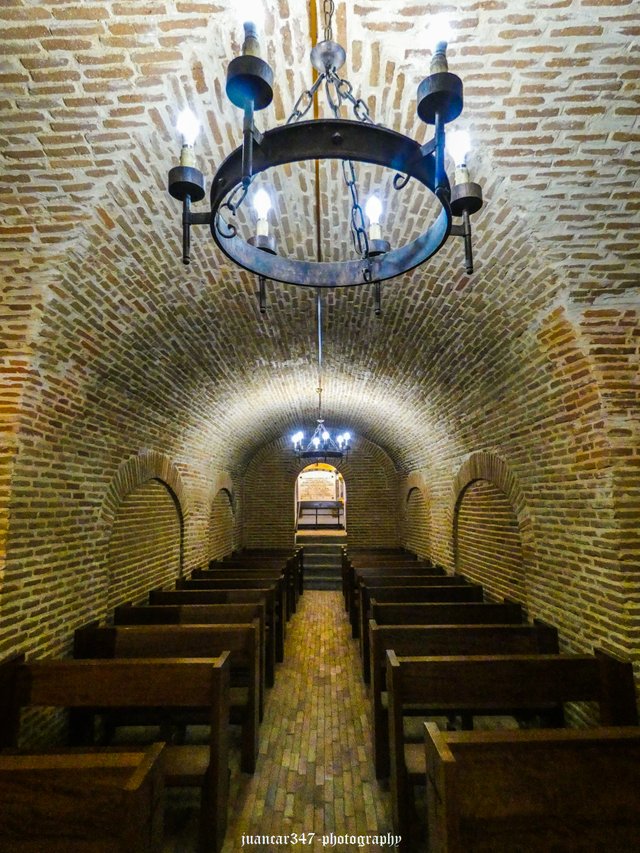The Sistine Chapel of the Spanish Baroque: San Antonio de los Alemanes
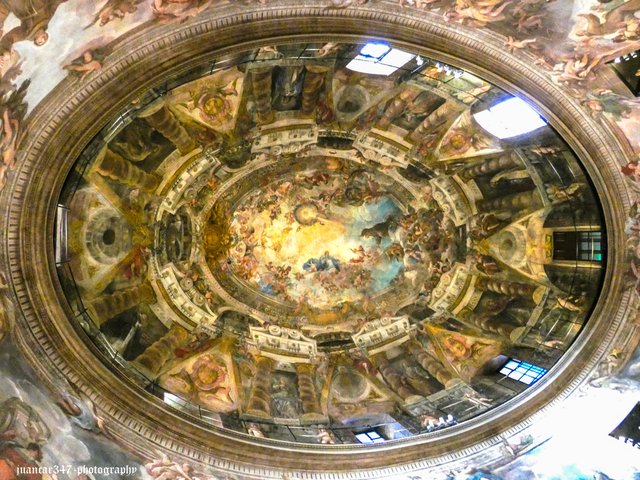
Someone once insinuated that the spirit of Baroque Art and Architecture was conveniently summed up in the title of one of the masterpieces of the distinguished writer, Lope de Vega and, by default, of Universal Literature, specifically, the one entitled ' The life is dream'.
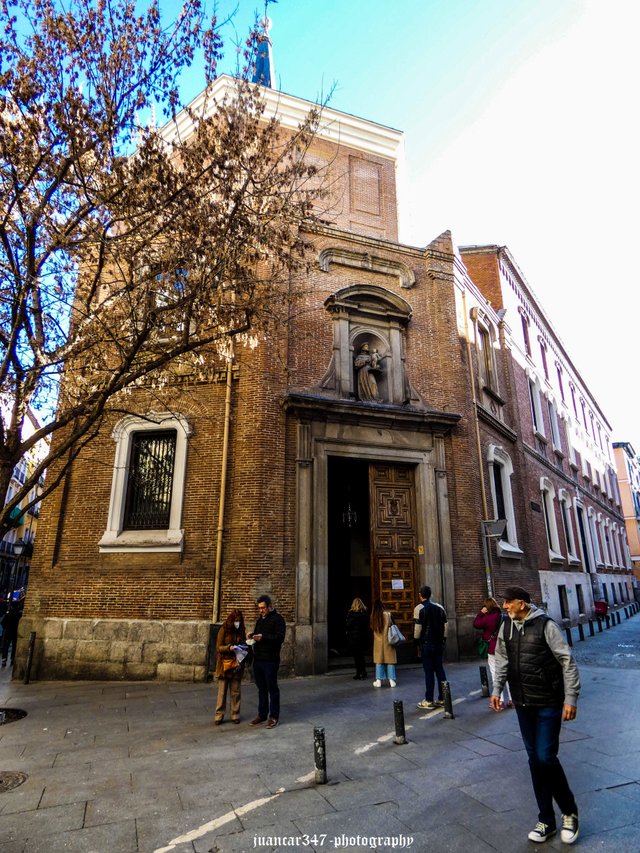
Description, which fits like a glove to that ambivalent and comparatively classic sense, of some Spaniards, whose state of mind fluctuated between the festive and the tragic, where appearances prevailed, above all.
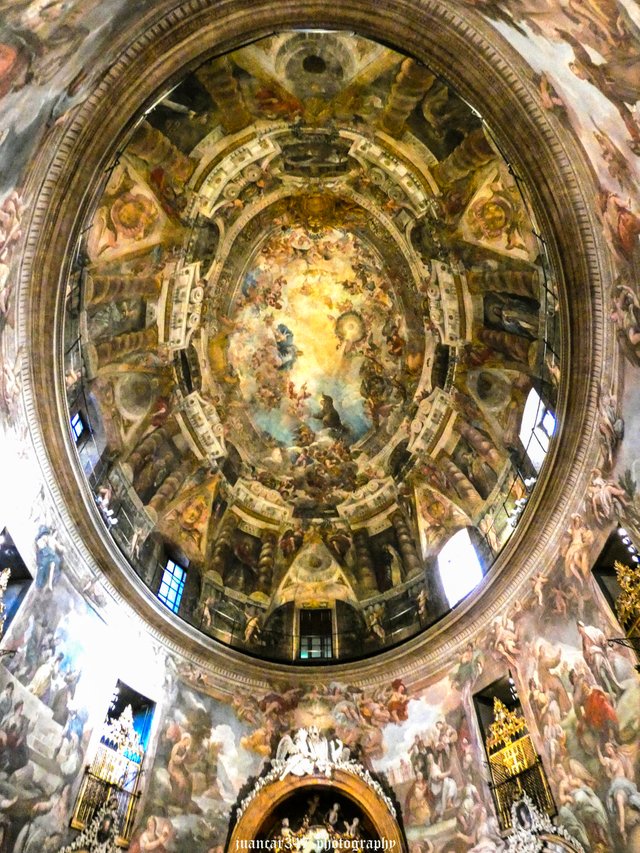
It is also said that the break between the Renaissance style, more typical of the reign of Philip II, who was considered the most Catholic of kings in his time, occurred between the reigns of Philip IV and Charles II, the latter king, who was given the nickname of 'the Bewitched', both for his sickly constitution and for some black legends favored by the superstitious imagination of the time.
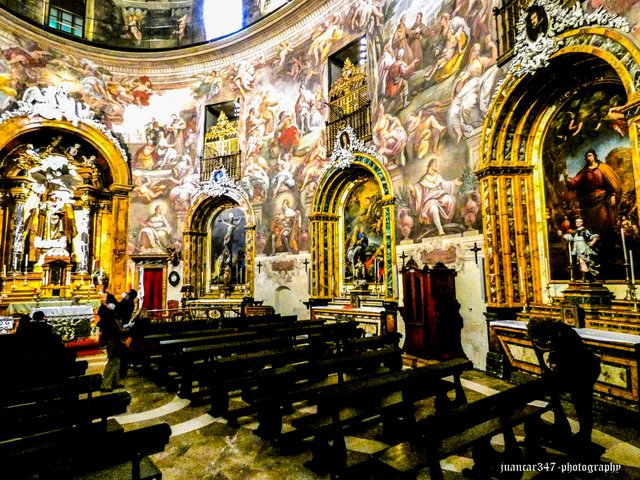
In this period and with these psychological antecedents - whose fruit, however, marked the excellence of the so-called Spanish Golden Age - Madrid became, deservedly, the undisputed capital of an Art and an Architecture, the Baroque, which left its imprint in a large number of temples, which I assure you are worth knowing and that I intend to show you little by little, if you have the patience to accompany me on this formidable adventure.
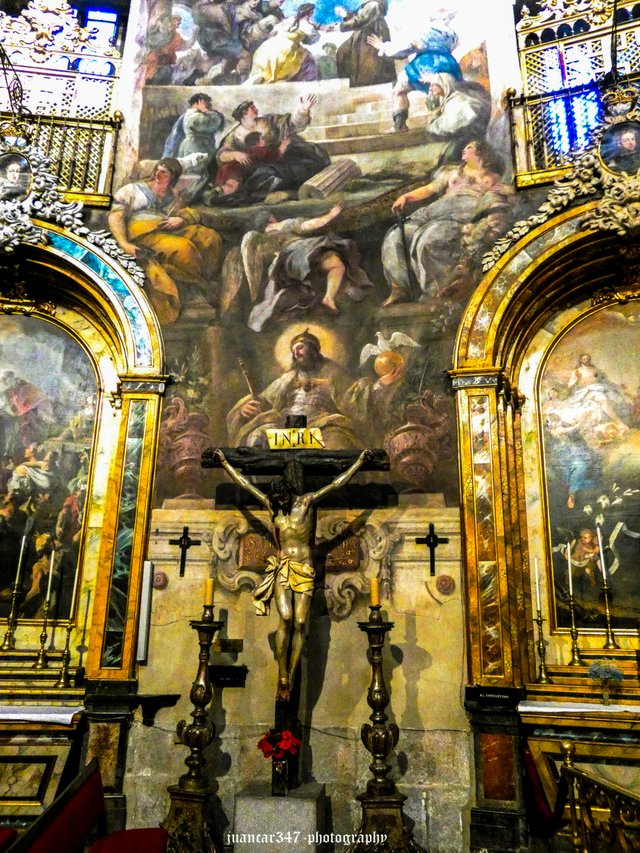
The temple that he wanted to show you today belongs to this period, a true jewel, whose characteristics are the exception to the rule and break the mold with the rest of the temples of its kind: San Antonio de los Alemanes (Saint Anthony of the Germans).
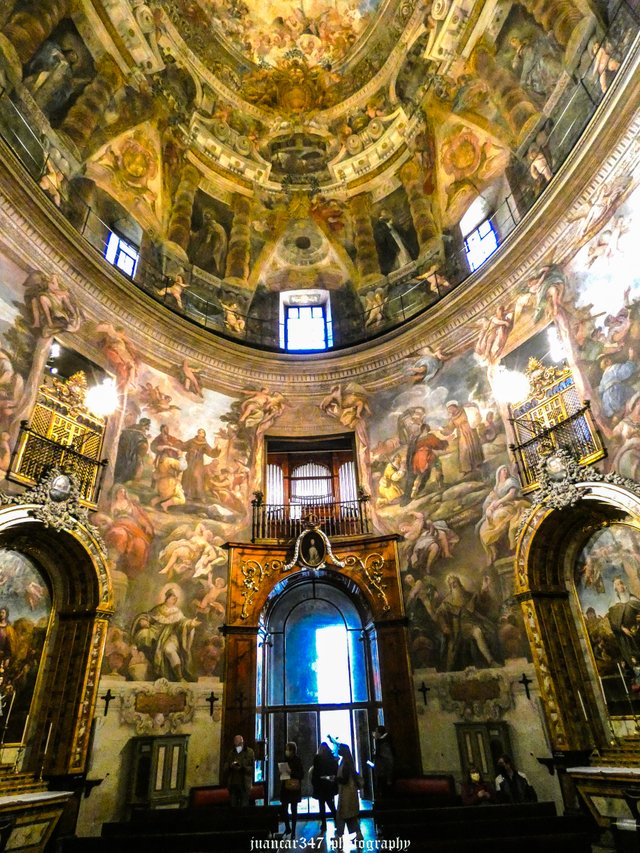
Located in the popular neighborhood of Malasaña, specifically on Puebla Street, transversal to Corredera Baja de San Pablo and the no less popular and, in a way, sadly famous Ballesta Street, two of the monumental landmarks that make it stand out of the rest, they are none other than those referring to its plant, unusually ellipsoid in shape and of course, to the circumstance, possibly more spectacular, to the point of diverting attention from other details, of being totally decorated by wonderful fresco paintings, which, made by the most important artists of the time -such as Father Ricci or Carreño de Miranda, among others- already deserves, on its own merit, the description of the Sistine Chapel of the Spanish Baroque, in the same way as the Chapter House of the church of San Isidoro de León, with its immeasurable paintings from the 12th century, is also described in this way, but in the Spanish Romanesque Art.
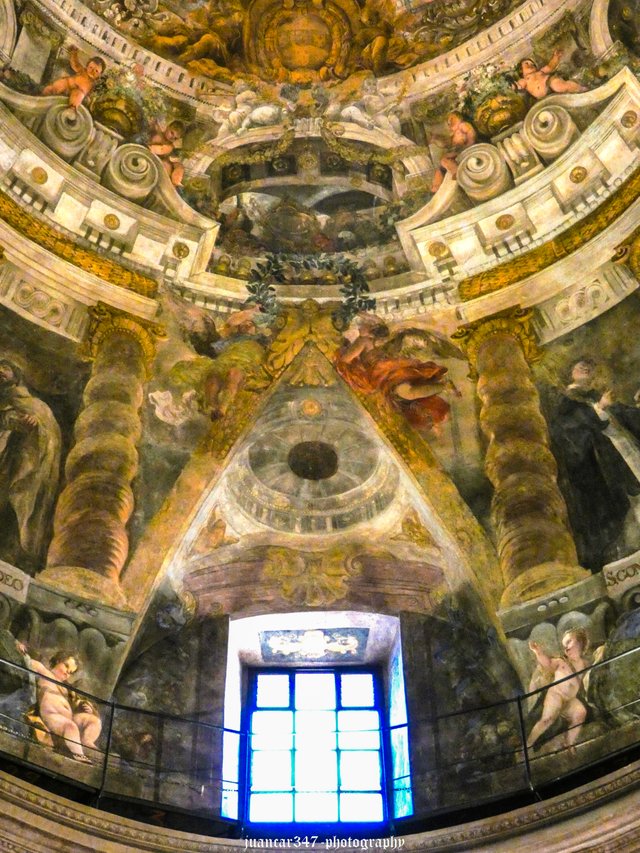
The paintings, as was the tradition at the time, are an open book to the people, about the life, work and miracles of a saint, in this case, the reference is one of the most beloved saints of Christianity: Saint Anthony of Padua, whose figure has remained deeply etched in the popular imagination, becoming a theme, even - I say this by way of anecdote - of modern folk or popular singing groups, such as the Castilian group Nuevo Mester de Juglaría (New Mester of Minstrelsy).
The church, designed in 1624 by the architects Pedro Sánchez and Francisco Seseña, originally had a hospital for Portuguese pilgrims added, which remained active until 1640, when the Spanish crown lost Portugal, remaining empty almost half a century, until Doña Mariana de Austria, in 1689, ceded it to the German Catholics who accompanied the wife of King Carlos II, being, precisely, from then on, when it began to be called San Antonio de los Alemanes (Saint Anthony of the Germans).
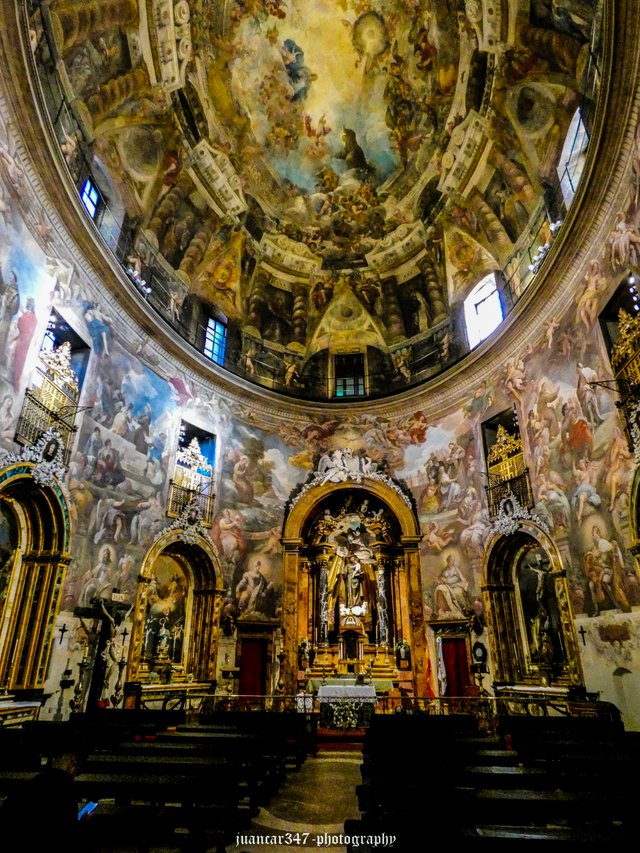
Meticulously designed in detail, who knows if especially so that the observer can experience for himself that overload of Art that in Psychology is still known as the Sthendal Syndrome, this temple, which once again focuses on the strangeness of its plan, recalls those other models with a circular or hexagonal floor plan -to the latter, some chapels from the 17th and 18th centuries belong, which as an interesting fact, I hope, house carvings of Christs or Virgins considered very miraculous by the people, being able to cite examples, such as those in the Soria city of Almazán or in the Riojan city of Briones- imported from the Holy Land and based on the so-called Sepulchrum Domini or Sepulcher of the Lord, located, likewise, in the roundabouts of numerous monasteries and cathedrals.
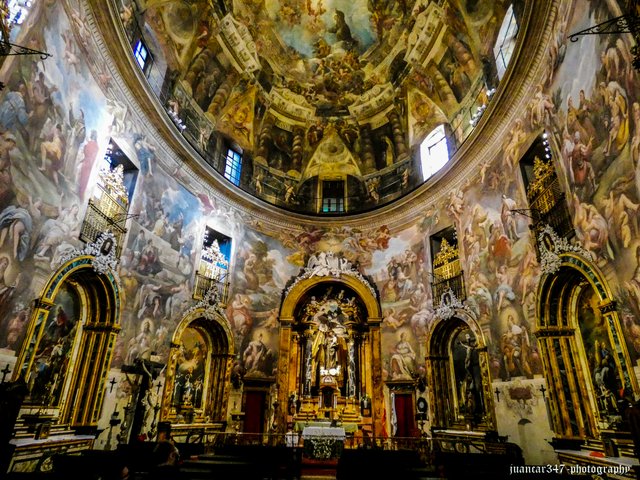
But another surprise, perhaps not so spectacular, but certainly no less interesting, is being able to access its crypt and see the superb masonry work that made these constructions something solid and of course lasting over time, of what there is a true treasure in that underground Madrid and little accessible to the general public, since there are many old houses that have similar constructions, referring to the field of tunnels and passageways, which generally connected palaces, churches, convents and even taverns - some of them the oldest taverns, have dining rooms in part of what were once tunnels - in authentic labyrinths, positions of History and Legend.
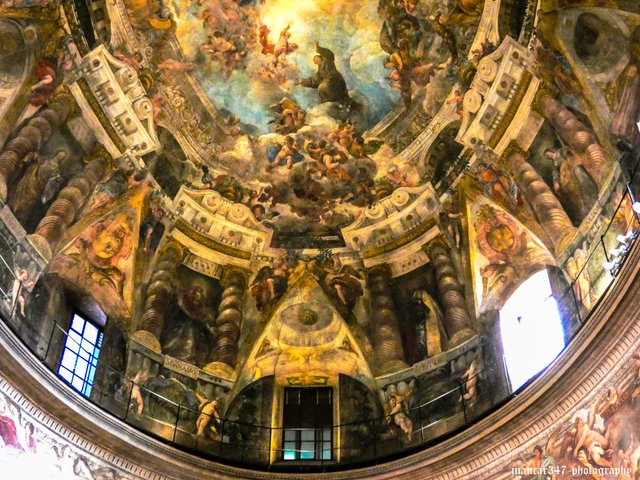
In short: a place where Architecture, Art, History and Tradition go hand in hand, to offer a work of genuine and unforgettable interest.
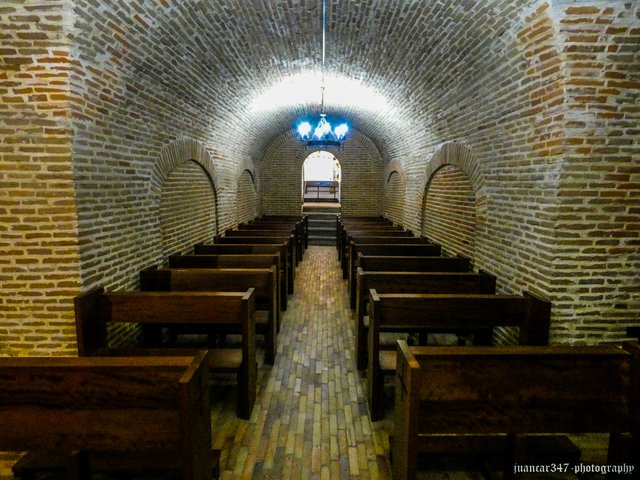
NOTICE: Both the text, as well as the photographs that accompany it, are my exclusive intellectual property and, therefore, are subject to my Copyright.
